Show Me a Complete Repertoire for Black and White!
Chess Openings For Black, Explained
also purchase from from chess.co.uk
Chess Openings for White, Explained by Lev Alburt, Roman Dzindzichashvili & Eugene Perelshteyn, CIRC (2006), 548 pages
by FM Stephen Berry Imagine that you knew no opening theory at all. Better still, imagine that you had all the opening theory which presently clutters up your poor brain totally erased. What could you do to make life worth living? How would you be able to enter your next tournament with the jaunty confidence of the true opening aficionado? Going out and buying these two books which, taken together, give a complete repertoire for both the black and white pieces would be one solution. But would it be the right one?
First, one good point. Both books have the very spacious and clear layout which I first met in Pirc Alert! by Alburt and Chernin. The books feature lots and lots of diagrams and are well organized with the main lines in bold type. Indeed, for much of the time you could go through the books without recourse to a chess board and set. Various tips and memory markers throughout the books attempt to reinforce the material of the chapters. I find anything in that direction useful.
Both books first introduce the authors and give some useful general tips on how to study the openings. But then they go into a chapter which seems to be a long digression on the history of 1 e4. Much of this stuff reads like a filler and may even be downright confusing as it covers lines which will not be recommended in the repertoire. We have to reach page 57 of Chess Openings For Black, Explained before we actually start examining the repertoire that the book proposes. With Chess Openings for White, Explained, you have the chapter on 1 e4 and then a further chapter on opening with 1 d4. Given that this book is going to recommend a repertoire based on 1 e4, this is a little curious. These chapters do give some background information, but could well have been omitted.
Let’s take a look at the repertoire content of each book in a little more detail.
Chess Openings For Black, Explained features the Accelerated Dragon against 1 e4, Nimzo and Bogo-Indians against 1 d4 and the Symmetrical English against 1 c4. These are solid and reliable lines. It also advocates lines to play against the less common White openings. The full prospectus is:
Part I: Introduction (3 chapters - 14 pages)
Part II: Defending against 1.e4
The Accelerated (and Hyper-Accelerated) Dragon (5 chapters - 80 pages)
The Maroczy Bind (6 chapters - 56 pages)
The Anti-Sicilians (4 chapters - 47 pages)
Part III: Defending against 1.d4
Nimzo-Indian Defense (9 chapters - 80 pages)
Bogo-Indian (3 chapters - 32 pages)
1 d4 without and early c4 (7 chapters - 59 pages)
Part IV: Defending against 1.c4 and other first moves (6 chapters - 60
pages)
Part V: Illustrative Games (1 chapter - 49 pages)
Specifically the book advocates the variation 8...a5 against the Accelerated Dragon main line (after 1.e4 c5 2.Nf3 g6 3.d4 cxd4 4.Nxd4 Nc6 5.Nc3 Bg7 6.Be3 Nf6 7.Bc4 0-0 8.Bb3). Against the Maroczy Bind the authors choose Gurgenidze’s line (1.e4 c5 2.Nf3 g6 3.d4 cxd4 4.Nxd4 Nc6 5 c4 Nf6 6 Nc3 d6 and now after 7 Be2 or 7 f3 …Nxd4 by Black). GMs Dzindzichashvili and Perelshteyn are both known for their expertise with the Accelerated Dragon and this line of the Sicilian makes a refreshing change from the Najdorf or Sveshnikov which seem to have been analysed to death.
Chess Openings For Black, Explained does offer some very interesting suggestions that strong players will appreciate. In the section on the Maroczy Bind, John Donaldson has pointed out that after 1.e4 c5 2.Nf3 g6 3.d4 cxd4 4.Nxd4 Nc6 5.c4 Nf6 6.Nc3 d6 7.Nc2 Bg7 8.Be2 0-0 9.0-0 Nd7 10.Bd2 a5 the move 11.Na3 (p. 186) brought White success in the heavyweight encounters Bologan-Motylev, Togliatti 2003 and Dominguez-Malakhov, Tripoli 2004. The authors suggest the following exchange sacrifice 11...Nc5 12.Nab5 Nd4 (12...Be6 13.Be3 a4 14.Rb1 Qa5 15.f4 f5 Dominguez-Malakhov, Tripoli 2004, and now 16.e5! is very strong) 13.Nxd4 Bxd4 14.Bh6 and now not 14...Bg7 15.Bxg7 Kxg7 16.Bg4 Bxg4 17.Qxg4 a4 18.Qe2 Qa5 19.Rac1 Nd7 20.Nd5 Nf6 21.Rfd1 Nxd5 22.Rxd5 with a clear advantage for White in the Bologan-Motylev game, but
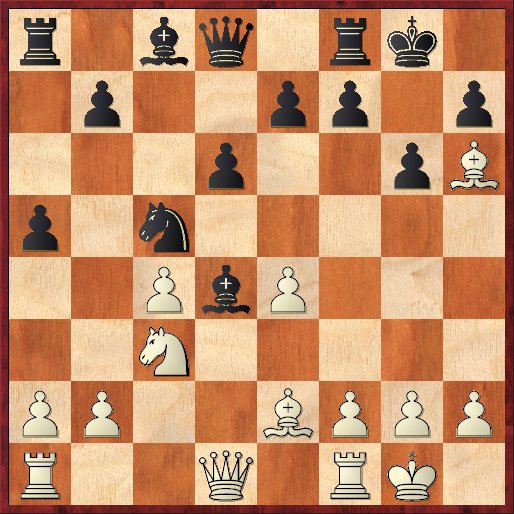
14...Bxc3! 15.bxc3 (15.Bxf8 Bxb2 16.Rb1 Bf6 17.Bh6 Nxe4 is better for Black) 15…Re8 intending ...e5 and ...f6 with a small edge.
Another interesting idea put forth by the authors is the opinion that the traditional two Bishop versus Bishop and Knight ending in the Maroczy is fine for Black as seen in the two illustrative games, Vallejo-Pons versus Malakhov and Rowson-Malakhov from Selfloss 2004. In these two games Black had no problems at all and it was the white-squared bishop of White which cut a poor picture.
Black enters the Sicilian via the line 1 e4 c5 2 Nf3 g6 and can thus sidesteps the Rossolimo. The move order with 2 …g6 also does extra duty against the Alapin Sicilian (2 c3), the Closed Sicilian (2 Nc3) and the Grand Prix attack (2 f4).
After 1 d4 Nf6 2 c4 e6 the book recommends the Nimzo-Indian against 3 Nc3 and the Bogo-Indian against 3 Nf3. For Nimzo players the suggested line to meet 4.e3 is 4...b6 with 5...Ba6 versus 5 Ne2 and if 5 Bd3 Bb7 6 Nf3 0-0 7 0-0 Black plays 7 …c5. Against the popular 4 Qc2 I am glad to see the book recommends the underrated Zurich Variation (4 …Nc6). With the Bogo-Indian it’s 4.Bd2 Qe7 with Black aiming for ...e5. These are all lines which could be – indeed are – played at the highest level.
Next follows a valuable section on all those irritating lines where White plays 1 d4 but does not follow with 2 c4. You are sure to have met the likes of the London System, Torre Attack and Colle System playing at your weekend congresses. It’s good that the book has taken some trouble here. For instance, I like this line against the Colle. After 1 d4 Nf6 2 Nf3 e6 3 e3 c5 4 Bd3 d5 5 c3 Be7 6 Nbd2 0-0 7 0-0 b6 8 Ne5 Bb7 9 f4 the fact that Black has left his knight on b8 means that 9 … Ne4! is an effective counter to the White build-up.
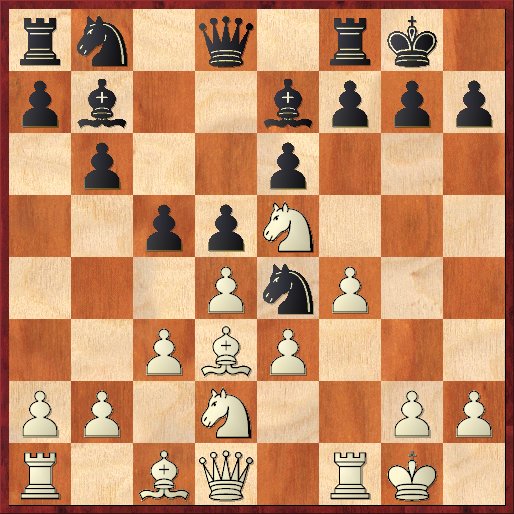
After 10 Nxe4 de 11 Bc2 f6 12 Ng4 the white knight is rather misplaced.
Against 1.c4 and 1.Nf3 Black utilizes the anti-Maroczy Bind and defends with 1...c5 and 2...g6. In other words, the book ensures that ideas that the reader has learned to combat the Maroczy in the section covering 1 e4 can be utilised against the English too.
There is an abundance of interesting ideas and analysis in this book based around a solid but lively Black repertoire. There are many novelties and improvements over existing theory, so I do believe that the reader gets his money’s worth.
Now, let’s see how the material is divided in the companion volume, Chess Openings for White, Explained:
Part I: Introduction (3 chapters – 14 pages)
Part II: Development of Chess Openings (2 chapters - 50 pages)
Part III: 1 e4 e5: The Open Games (8 chapters - 134 pages)
Part IV: The Sicilian Defense (1 chapter - 40 pages)
Part V: The French Defense (5 chapters - 142 pages)
Part VI: Caro-Kann & Center Counter (2 chapters - 46 pages)
Part VII: Pirc, Modern, Alekhine, Nimzo, & the Rest (5 chapters - 76 pages)
Part VIII: Illustrative Games (1 chapter - 24 pages)
Conclusion (1 page)
Table of Main Lines (7 pages)
The first point to make is that the choice of lines for the white pieces is more cavalier. With Black the repertoire was based around the Accelerated Dragon, Nimzo and Bogo, all main line openings. With White the authors have taken a few more liberties – as you are allowed to do with White.
For instance, with the Open Games we have 1.e4 e5 2.Nf3 Nc6 3.d4 exd4 4.Bc4 and then the Modern Two Knights 4...Nf6 5.e5 forms the core of the book’s recommendation. Against the Sicilian it’s the Grand Prix Attack (1.e4 c5 2.Nc3 Nc6 3.f4). This opening is dangerous, but unusual at the top level. Again, the recommendation against the Caro-Kann is the rather rarely played Exchange Variation (1.e4 c6 2.d4 d5 3.exd5 cxd5 4.Bd3). It’s only with the French that the authors go main line with 1.e4 e6 2.d4 d5 3.Nc3, but even here they choose an old line against the Winawer 3 … Bb4 4 e5 c5 5 Bd2. In other words, you are getting easy to learn, slightly offbeat lines which will rack up plenty of points against the unprepared.
Interesting is their recommendation against the Pirc, playing the Classical Two Knights lines with 5.h3 sometimes followed by an early a4, working to control the game and limit Black’s counterplay. This is something which is rather rare and liable to surprise the average Pirc player.
It is also a hazard of choosing slightly offbeat lines that you run the risk of running into trouble at the highest level. John Watson pointed out a number of these problems in his review of this book. I will give a couple of them here.
After 1 e4 e6 2 d4 d5 3 Nc3 Bb4 4 e5 c5 5 Bd2 Nh6
Watson relates that he has used the move 5...Nh6, a move with great success and that the move has also has done well since its introduction into grandmaster play. The book recommends the line
6 Nb5 Bxd2+ 7 Qxd2 0–0 8 f4
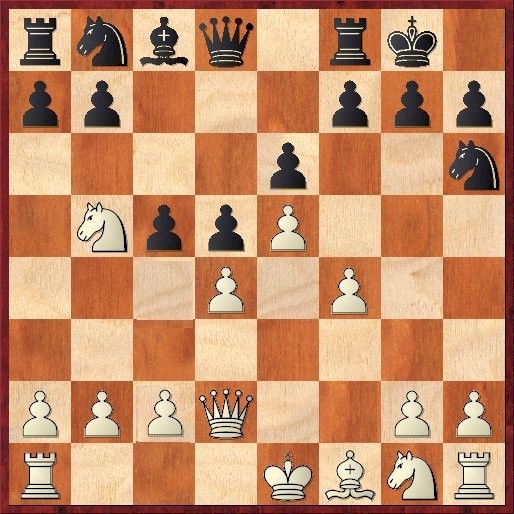
After 8...Nc6 9 Nf3
the authors merely say ‘Compare 5...Ne7’ (p. 376) and stop. But as Watson points out, “it takes almost no thought to see how different the two lines are. A knight on h6 defends against the tactics involving Bxh7+ as well as the move Nf7 that DPA feature in the lines after 5...Ne7. Furthermore, Black's knight can help attack the centre from f7 after he plays ...f6, and ...Nh6 also leaves Black's queen in contact with the kingside. Finally, the knight can (and does) go to g4 with great effect when a pawn on d4 anchors e3 for occupation via ...Ne3 and/or when Black's queen on b6 supports that move.” In fact, many of the lines that the book gives against 5 … Ne7 are interesting but very tactical and depend for their success on the fact that the knight on e7 does not defend f7.
Watson backs up his judgement with the following line.
9...a6!: 10 Nd6 cxd4 11 Bd3 (This pawn sacrifice is the main idea of the book in this anti-Winawer line (11 Nxd4 f6 12 0–0–0 fxe5 13 Nxc6 bxc6 14 fxe5 Ng4! is good for Black), 11...f6.

Here, with the king’s knight on e7, the book recommended 12 0–0 and after Black responds 12...fxe5, a long tactical sequence leads to White’s advantage.
But after 12 0-0 in the diagram, Watson points out that Black can play the strong move 12....Ng4! (even 12...fxe5!? 13 fxe5 Nxe5 – which fails by force with the knight on e7 – isn't clear here after 14 Nxe5 Qxd6 15 Rxf8+ Qxf8 16 Rf1 Qe7). After 12...Ng4!, for example, play might continue 13 Qe2 Ne3 14 Rf2 Qb6 15 b3 g6, when Black threatens to capture on e5, but then 16 exf6 Rxf6 17 Ne5 Qc5 is uninspiring for White, to say the least.
The most important 1 e4 e5 line in the book is the following variation from the Two Knights Defence: 1 e4 e5 2 Nf3 Nc6 3 d4 exd4 4 Bc4 Nf6 5 e5 d5 6 Bb5 Ne4 7 Nxd4
One of the main lines proceeds 7...Bc5 8 Be3 (8 Nxc6!? Bxf2+ is a line with immense complications that, according to years of analysis, seems to end in one forced draw or another – if White is lucky) 8...Bd7 9 Bxc6 bxc6 10 Nd2
Now the authors analyse 10...0-0 and 10...Nxd2 to White's advantage, which is also what theory concludes. Pinsky's Two Knights Defence, for example, (Everyman 2003) concurs here. But the move widely accepted as best is:
10...Qh4! 11 0–0
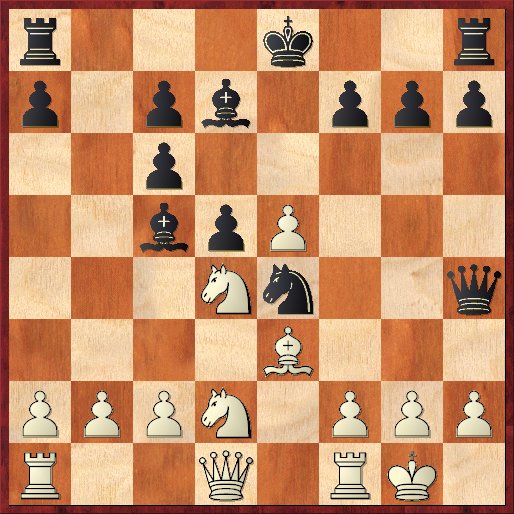
Here a common move order that generally transposes is 11 Nxe4 Qxe4 12 0–0, and now 12...0–0 13 Re1 is the book’s main line though 12...Bb6! is more common
Returning to the diagram position after 11 0-0, the authors give 11...0-0 12 Nxe4 Qxe4 13 Re1 and analyse 13...Qxe5 and 13...Qh4, both leading to an advantage for White.
Watson points out that there are two things wrong with this sequence. First, in almost every game that has reached this position (after 13 Re1), whether over-the-board or correspondence, 13...Qg6 has been played, not the other (weak) queen moves. Yet, 13...Qg6 is not found in this book at all. Black has done perfectly well with it, so in any book purporting to be helpful it at least needs to be addressed.
But even more importantly, Black usually doesn't play 11...0-0; he plays 11...Bb6! (at least four times as often as 11...0-0). It is also theory's choice, and considered more accurate than 11...0-0, even if the latter is satisfactory. Our authors don't even mention 11...Bb6. We can also arrive at this position via the common move order 11 Nxe4 Qxe4 12 0-0, when again Black usually plays 12...Bb6, transposing to 11 0-0 Bb6! 12 Nxe4 Qxe4. Between these two orders, the following position has been well-tested:
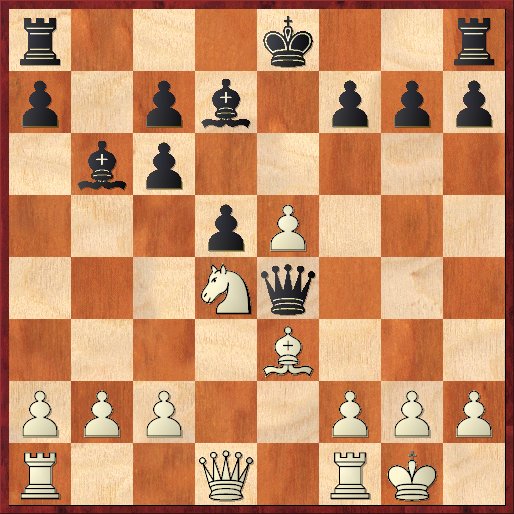
Black has the two bishops, the idea of ...c5, and active pieces. He has scored very well, and 13 Re1 is met by 13...Qg6, when he has done even better (about 65%, with a significantly superior performance rating).
James Vigus also points out that after 1 e4 e5 2 Nf3 Nc6 3 d4 exd4 4 Bc4 Nf6 5 e5 Ne4, the Chess Openings for White, Explained recommendation of 6 Qe2 Nc5 7 c3 should not be answered as in the book by 7...dxc3. Much better is 7...d3! and even 7...Ne6 has been played with level results. Watson found some games with 7...d3! (two by grandmasters), without a victory for White.
So there you have it. Certain lines have a slightly dubious reputation for a reason and the authors of Chess Openings for White, Explained are sometimes skating on thin ice. Nevertheless, they have produced an attacking repertoire which will net you a large number of points against the average player. If you graduate to the international level, this review suggests you will have to adopt a more ‘main line’ repertoire. But until that happy event occurs, you can have plenty of fun with what is suggested here. |
![]()